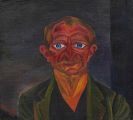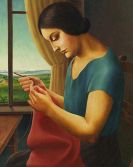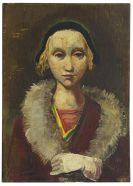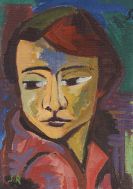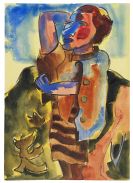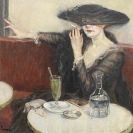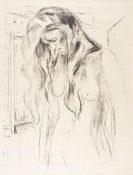
Peter Behrens
Hamburg
1868 -
Berlin
1940
Peter Behrens is one of the most influential 20th-century German designers. At the beginning of the century, he brought forth outstanding works in painting, architecture, graphic design and industrial design, which exerted a paramount influence in all these various fields, opening up uncharted territory for the generations to come. He is viewed as the founder of modern objective industrial architecture and modern industrial design.
Born in Hamburg in 1868, Peter Behrens studied at the Hamburg Kunstgewerbeschule [School for the Applied Arts] from 1886 to 1889 before attending the Kunstschule in Karlsruhe and the Düsseldorf Art Academy. From 1890 he worked as a painter and graphic artist in Munich, where he joined the Jugendstil movement; in 1893 he was a founding member of the Munich Secession.
He produced woodcuts, coloured illustrations, designs for book bindings and crafts objects entirely shaped by the Jugendstil formal language. In 1897 Behrens joined forces with Hermann Obrist, August Endell, Bruno Paul, Richard Riemerschmid and Bernhard Pankok to found the Vereinigte Werkstätten für Kunst und Handwerk in Munich to produce handmade utilitarian objects. In 1898 Peter Behrens collaborated on designing the Berlin journal "Pan" and produced his first furniture designs.
In 1899 Peter Behrens was appointed by Grand Duke Ernst Ludwig of Hesse-Darmstadt to the Mathildenhöhe artists' colony the Grand Duke had just established in Darmstadt. There Behrens designed and built his first house, his own dwelling. Designed as a total work of art, "Haus Behrens" caused quite a stir; Behrens himself designed the architecture and the interior with all its appointments and furnishings down to the last detail.
In 1901-02 Peter Behrens taught at the Düsseldorf Kunstgewerbeschule. In 1903 he left Mathildenhöhe, serving until 1907 as the director of the Düsseldorf Kunstgewerbeschule. In 1906 Peter Behrens received his first commission from AEG (Allgemeine Elektricitäts-Gesellschaft) to design advertizing material. Emil Rathenau hired Behrens as an artistic consultant to work on a wide range of projects. In 1908-09 Behrens designed the AEG Turbinenhalle in Berlin, a concrete, steel and glass factory building with an outspoken agenda. In addition to architecture (housing for working men and their families), Behrens also designed household electrical appliances, standardizing the forms of their components and thus making them interchangeable, which rationalized production. Further, he was in charge of designing sales rooms, catalogues, price lists, etc, thus using design for the first time to create a unified appearance as the sign of corporate identity. This collaboration lasted until 1914.
In October 1907 Peter Behrens joined Peter Bruckmann, Josef Maria Olbrich, Fritz Schumacher, Richard Riemerschmid, and Hermann Muthesius to found the Deutscher Werkbund. Like the Munich Vereinigte Werkstätten (see above), the Werkbund was inspired by the British Arts and Crafts movement. Its aim was to promote crafts skills while leading into industrial production, where standardization and an objective formal language were to achieve the same high quality standard as that of handmade goods.
That same year, 1907, saw Peter Behrens founding a large architectural and design practice in Berlin. Walter Gropius (up to 1910), Ludwig Mies van der Rohe (1908-11), and Le Corbusier (1910-11) also worked there. This joint studio was very productive and numerous architectural commissions were realized, including the German embassy in St. Petersburg (1911-12) and the IG Farben Höchst headquarters in Frankfurt (1920-25), which showed the influence of Expressionism.
In 1926 Peter Behrens designed "New Ways", a private dwelling in Northampton, which is regarded as an early example of the International Modern style. Further, Peter Behrens designed china, glass objects and patterned linoleum flooring for various companies. One of his last commissions, in 1938, was to plan new AEG headquarters in Berlin. Peter also continued to teach, heading the architecture department of the Vienna Akademie der Bildenden Künste from 1922 to 1936.
For the rest of his life he was head of the architecture department at the Preußische Akademie der Künste in Berlin.
Would you like to sell a work by Peter Behrens?
Infos for seller
